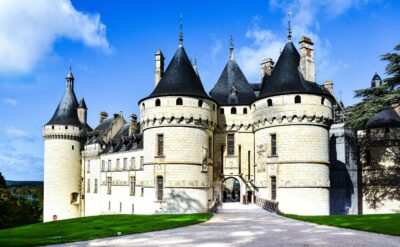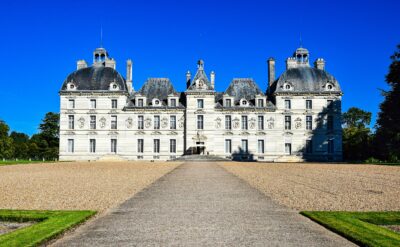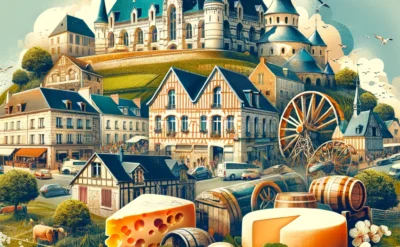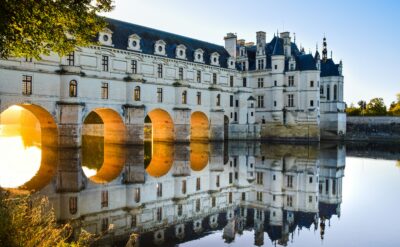Chambord Castle
Chambord Castle, a masterpiece of the French Renaissance, will amaze you with its grandiose architecture and its 440 rooms. Surrounded by vast forests, this royal estate is a testament to the genius of François I. A must-see visit to discover one of the jewels of the Loire Valley.
Chambord Castle
Pourquoi visiter "Chambord Castle"?
The Château de Chambord, located in the Loire region of France, is the largest and most majestic of the French Renaissance castles.
Built in the 16th century on the orders of Francis I, it is famous for its remarkable architecture, notably its double spiral staircase designed by Leonardo da Vinci and its impressive roofs evoking the silhouette of a city.
With its 440 rooms and vast forest gardens, Chambord is a Renaissance masterpiece that continues to fascinate visitors from around the world.
You will be able to discover the riches of this unique place between modernity and the history of France
Chambord Castle: a Renaissance masterpiece
Discover the Chambord Castle, a jewel of the Renaissance, built under the leadership of François I. This monument impresses with its grandiose architecture and visionary innovations, blending art and history at every turn.
- The double-revolution staircase: A true masterpiece inspired by Leonardo da Vinci, where two people can climb without ever crossing paths, symbolizing the perfect fusion between art and engineering.
- The panoramic terraces: Offering a breathtaking view of the roofs of the castle and the surrounding forests, they transport you to another time, where you can imagine the royal court strolling in all magnificence.
- The Royal Apartments: Enter the intimacy of the kings and queens of France by visiting the sumptuous apartments of François I and Louis XIV, decorated with elegance and richness.
French-style gardens: a green setting
The gardens of the Chambord Castle, restored to all their splendor, embody the art of the French garden, combining perfect geometry and natural harmony.
- Symmetrical parterres: Immaculate and meticulously maintained, the gardens reflect the desire for absolute control over nature, typical of the era of Louis XIV.
- The ponds and fountains: These water features add a touch of freshness and tranquility, offering visitors an ideal setting for relaxation after exploring the castle.
- The Grand Canal: Stretching over 4 kilometers, this monumental canal is one of the most impressive elements of the park, recalling the great engineering projects of the time.
The forest estate: a wild and preserved space
With its 5,440 hectares, the Chambord estate is the largest enclosed forest park in Europe, home to an incredibly rich fauna and flora.
- The Royal Hunt: Once reserved for kings, this hunting ground is still today a place for preserving wildlife, where deer, wild boar and roe deer roam freely.
- The Discovery trails: More than 20 kilometers of marked paths allow you to explore this majestic forest, on foot, by bike or by horse-drawn carriage, for a total immersion in nature.
- The Animal observatories: Specially designed platforms allow you to observe wildlife without disturbing it, particularly during the deer rutting period, a unique moment of connection with nature.
The royal vegetable gardens: a return to the sources
Reviving the agricultural traditions of yesteryear, the vegetable gardens of Chambord have been recreated to offer visitors an authentic experience.
- The Organic crops: All fruits, vegetables and aromatic plants are grown using environmentally friendly methods, in line with traditional techniques.
- The nourishing gardens: These vegetable gardens are not only aesthetic, but also productive, partly supplying the estate’s restaurant with fresh, local produce.
- Workshops and visits: Visitors can attend workshops on ecological gardening or take part in guided tours to understand the challenges of sustainable agriculture at the castle.
The vineyards: a rediscovered wine heritage
The Chambord estate has reintroduced the cultivation of vines, thus reviving a centuries-old wine-growing tradition.
- Historic grape varieties: The Chambord vines were planted with grape varieties typical of the region, notably Romorantin, an ancient grape variety once favored by the kings of France.
- Biodynamic production: The vines are cultivated according to biodynamic principles, respecting the land and the natural cycle, to produce a wine that reflects the surrounding nature.
- Exclusive tasting: Visitors have the opportunity to taste the estate’s wines, accompanied by explanations of ancestral and modern winemaking methods, in an exceptional setting.
A visit to the Château de Chambord is a total immersion in history, art and nature. From the impressive architecture of the castle to the biodiversity of the park, each element tells a rich and fascinating story. It is a journey to the heart of French heritage that combines historical discovery, natural beauty and an unforgettable sensory experience.
Learn more
Stages and map
Images
In detail
What's included with this tour:
Eau en bouteille
Transport en mini van climatisé
Not included in this tour:
Pourboires
You might also like





